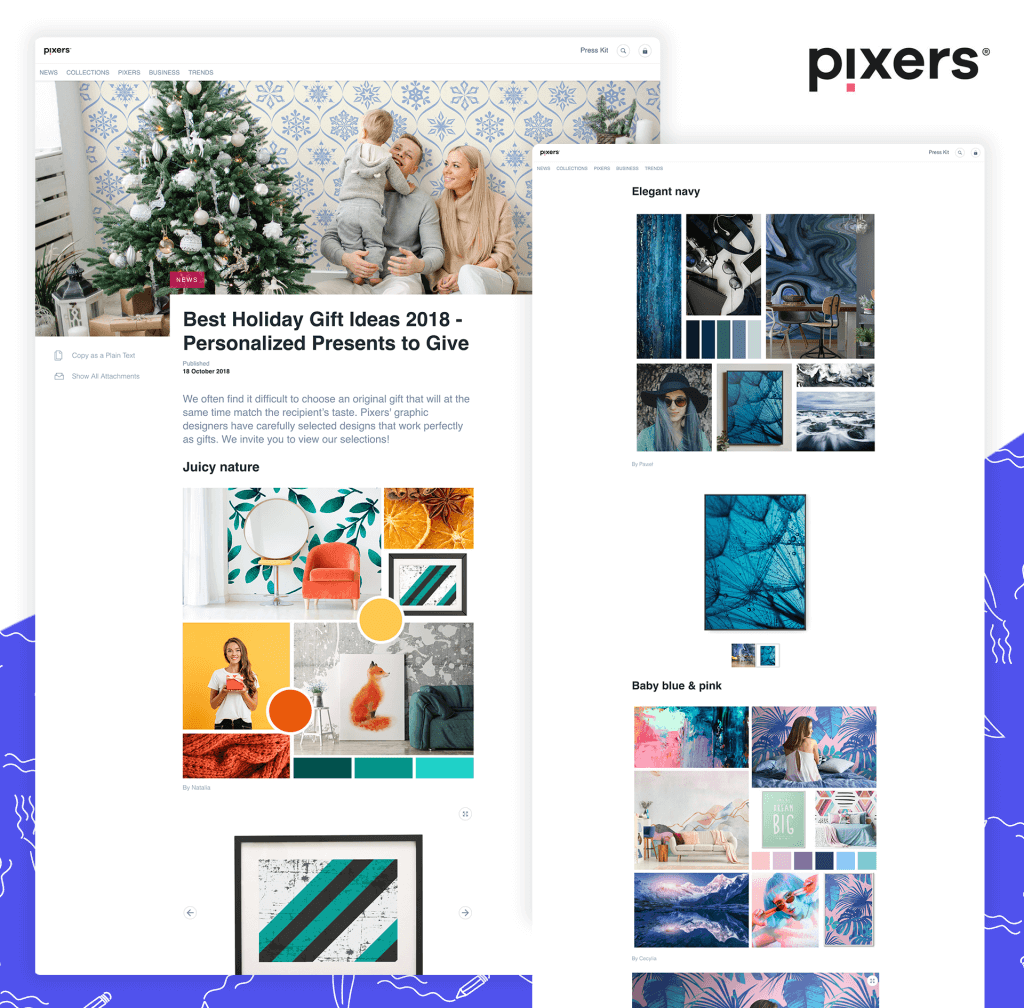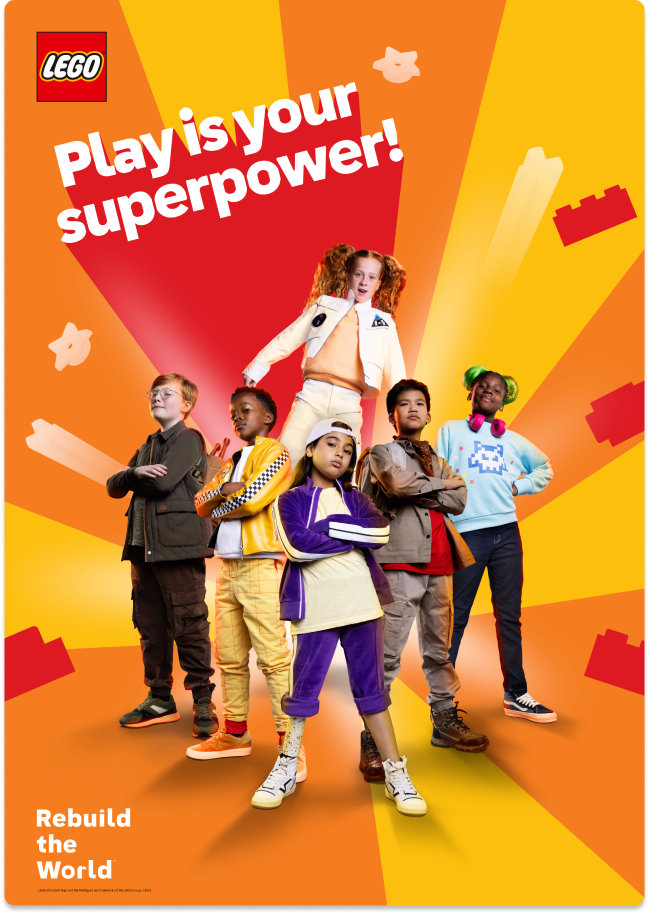Have you ever found yourself questioning your storytelling skills? We've all experienced that nagging doubt, that sinking feeling in the pit of our stomach when we wonder if our storytelling resonates with our target audience.
It's a shared struggle, a common pain point for many PR professionals.
On a positive note, if storytelling is done correctly it can evoke real emotions, inspire action, and foster loyalty. A well-crafted narrative can highlight your brand's uniqueness, illustrate your company's journey, and ultimately, enhance your brand's image.
In this article, we'll guide you through the storytelling basics and provide an effective framework and examples of how LEGO applies them in its campaign.
Elevate your PR storytelling with Prowly AI. Craft compelling content, generate press releases, and refine pitches seamlessly. Try Prowly today for innovative and impactful storytelling.
What are the 5 elements of storytelling?
It's the 5Ps: People, Places, Pictures, Platforms, and the Personal.
This framework is truly useful in ensuring all the essential elements of good storytelling are on point.
Whether you apply it to an entire PR campaign or a single piece, they can help you keep to quality standards. You can also treat them as elements of a news story. Think of them as elements that journalists look for in your stories, press releases and pitches. Proper delivery will increase the effectiveness of your messages.
#1. People
Relatable characters and emotional engagement — the human feel is one of the key components of a good story.
→ Crafting characters and human connections
This rule is part of the basics of storytelling: who your hero is and what they do gets the most attention from your audience.
Utilize archetypes and narratives to build stories that resonate with your target audience. They're proven to work — it's a set of universal schemas that've been in use for centuries for a reason.
→ Opting for real stories and personalities
Can you use real stories to support your point? It's really worth the effort! Depending on the aim of the story, you can go with external or internal contributors.
- External contributors are basically your current customers. Featuring them in your story adds authenticity and helps to build trust with your potential customers.
- Internal contributors help give a human face to your company. They are your employees, company founders, or brand ambassadors. Your audience can meet the people behind the product or service and see their point of view.
#2. Places
The second element of good storytelling is where the story happens. Either in real or imaginary surroundings, make sure to create an appropriate atmosphere for your story to unfold in.
→ Setting the stage and atmosphere
Allow your audience to easily imagine the place. Use rich, vivid language (either in words or visuals) to create immersive environments. Remember that each place evokes specific emotions and memories in your audience. Choose the right context to anchor your brand's story.
→ Using location-based storytelling
This is another lever for your storytelling. Add depth to your story by incorporating your brand's origin or geographical location. It's especially worth a thought if it adds context to your PR and CSR choices.
You can also use it as a way to deliver location-specific narratives. If your PR campaign is aimed at a particular city, local elements will definitely stand out and make your story memorable.
#3. Pictures
The visuals you choose for your story can make it or break it. Learn what criteria are most useful to pick the best options.
→ Building visual storytelling
Support your narrative with visuals. Whether you use photos or tell your story in videos, the graphic layer is crucial to transmitting your point. Select images that not only attract attention but also align with the narrative's tone and message.
Use a consistent visual style that aligns with your brand's identity and story themes. Doing so will allow your audience to easily recognize your materials, even if they see just a part of them.
Integrate multimedia elements such as photos, videos, and infographics to increase engagement and sharing. This is worth remembering especially when it comes to pitching media.

→ Using imagery in PR
Imagery can easily communicate complex messages and evoke strong emotional responses — even before the viewer realizes it. That's why you need to double-check if the associations in your target audience are coherent with your intentions. Certain images can carry a huge cultural weight in one group and be entirely neutral for another.
#4. Platforms
Your chosen platform(s), or the tools you use, also fall into the components of storytelling. Learn which will make the best choice for your story.
→ Choosing the right medium
Where will you tell your story? Your choice of media will determine the tools you have available. Let's talk about two criteria you can consider:
- The first is the strengths and constraints of various media. Coming up with your own comparison will definitely help you make an informed decision.
- The second is your audience's media consumption habits. It's a crucial factor in reaching people. Ensure the story is delivered through their preferred channels and in a way that will resonate with them.
When you choose your media, remember to adjust the multimedia elements. This lets you get the narrative's impact on point.
→ Leveraging different platforms for PR storytelling
You'll probably choose several platforms. And that's usually the best approach you can take! With cross-platform strategies, you can extend the reach and lifespan of your PR story. Remember, though, to use their full potential and adapt the storytelling approach to suit each platform.
But, what does that mean?
On every platform, you have a slightly different audience and (vastly) diverse media to tell your story. That's why you should come up with a few story angles appropriate for each case. It's a great tip for press releases in particular: your angle can make or break a publication.
What's more, some platforms — especially social media — give you opportunities for a two-way narrative with your audience. Use interactive features like comments and invite your followers to share their say in your story to increase engagement.
#5. The Personal
Last, but certainly not least. From all the basic elements of storytelling that we mention here, this is the factor that makes your story stand out. After all, you want the audience to care. Let's take a look at how to get it done.
→ Building personalized narratives
When you understand who you want to reach, you get critical insights into what to incorporate into your storytelling strategy. This helps you tailor stories to your target audience: to their interests, challenges, and aspirations.
Chances are, of course, that your audience is diverse. Yet, you can solve that with segmentation and customize your narrative for different segments.
→ Connecting on a personal level with your audience
Your interactions with your audience can become the elements of a great story. It might be a simple call to leave comments or a competition, or even more sophisticated ideas.
Opting in for these helps you establish personal connections and foster a community.
How does LEGO use storytelling elements?
Examples, finally some examples! Let’s take a look at how LEGO implements these five elements of storytelling in their campaign, as started in September 2023 — "Play is Your Superpower".

First, a bit of context. LEGO based its campaign on a recent study saying that children spend just 2% of their time playing (as claimed in their press release). They want to show why play is crucial to a child’s proper development and encourage families to make it a priority.
See how they use the elements of a good story to make their point.
1. People
Most LEGO stories — and this one in particular — feature children or families as the main protagonists. They highlight that the joy of playing is universal, always choosing appropriate characters. In the snowball fight video, one of the heroes is an old lady who uses a Yoda minifigure to stop an incoming snowball.

LEGO added real-life stories as a part of their Play is Your Superpower campaign. To support the idea of reintroducing play into family lives, they came up with The Play Squad: Tan France, Naomi Watanabe, Bindi Irwin and Stephanie Beatriz. Each of them shares the impact that playtime has had on their adult life, highlighting the benefits.


2. Places
The scenes you choose are powerful, even if they’re a basic element of storytelling. Let's see how LEGO uses this tool.

In this movie, they set the story in a building that's immensely dull and boring. Entering the HQ, the viewer is hit by an atmosphere defined by a lack of creativity and individuality. We can note that this is their take on The Adult Space. It perfectly sets the stage for the LEGO story to unfold.

From the beginning this story is set in a dreamy winter wonderland. It purposefully evokes famous holiday songs, with white snow, children playing, and people being nice to each other. It's definitely The Play Space.
Both scenes highlight the key message that each LEGO story carries: the influence of play in our lives. The point is to make it so obvious that your audience doesn't have to analyze it to find your intended meaning.
3. Pictures
LEGO’s visual storytelling is vibrant, often utilizing bright colors and dynamic scenes that capture the attention.
In their #SuperpowerOfPlay campaign, they always use one common element:

This scene captures the essence of the superpower of play — and the imagery used by LEGO. The kid, joining two LEGO bricks, sends out a wave of play, calling forth LEGO characters to join the snowball fight. It bridges the gap between the physical toy and its imaginative potential.
The wave of play is so characteristic that you'd recognize this campaign even if it was left with no trademarks. Pictures can also provide multimedia to use with your press releases. This infographic shows the main points of the LEGO research on play — a perfect example of data-driven storytelling. It has multiple purposes: from sending in your media package to being shared by employees on LinkedIn.

4. Platforms
For the #SuperpowerOfPlay, LEGO leverages a variety of media sources, from TV commercials and print ads to digital platforms. They aim to meet their audience where they are most engaged.
An example? A film "packed with hidden clues" that unlocks special minifigures.

LEGO describes its campaign in their press release:
"The fully integrated global campaign will run across a variety of channels including TV, digital, out of home, cinema, PR, influencer, and e-commerce. The film will also come to life in LEGO stores globally with playable experiences that tie into the characters' mission from the hero film."
Let's see how it unfolds. In London, they opened up The LEGO Superpower Academy for a week, starting on October 12 — the World Play Day. This action in itself made the news, getting coverage from multiple news sites and social media accounts.

5. The Personal
With a bunch of LEGO bricks, you can tell your own story. This principle is reflected in their PR narratives, emphasizing that with LEGO, the story is yours to build.
Even within this one campaign, LEGO invites its community to share its content under the #SuperpowerOfPlay hashtag.

This approach is even rooted in their products of the LEGO Ideas series, where they let people submit their own ideas for new LEGO sets. Those which get the most votes become reality.

As a part of their campaign, LEGO uses segmentation. They show if their message is aimed at Families or Grown-Ups, tackling different approaches to realize the campaign's purpose.


LEGO’s storytelling in PR is a robust mix of character creation, immersive worlds, visual appeal, strategic platform use, and personalization, all of which combine to form a brand narrative that's engaging, inspiring, and deeply connected with audiences of all ages.
Extra tips on what makes good storytelling
The 5P is a basic framework, but there are more elements to a good story.
Let's see how brands incorporate elements of good storytelling into their campaigns.
Embrace User-Generated Content
Example: Apple’s "Shot on iPhone" Campaign

Apple's "Shot on iPhone" campaign is a prime example of leveraging user-generated content to show off the iPhone camera’s possibilities. They focused on showcasing photos taken by real users, both professional and amateur photographers.
It carries a powerful message about iPhone camera possibilities, showing the effects instead of technical specifications. That's one of Apple's key elements of storytelling, and it’s visible across most of their campaigns.
Highlight Brand Heritage and Evolution
Example: John Deere’s Brand Magazine "The Furrow"

Share your brand’s history and how it has evolved over time. John Deere has been publishing "The Furrow" since 1895, which tells the story of the brand’s legacy and ongoing innovation in agriculture, resonating with their audience's values and the industry’s history.
Leverage Emotional Storytelling
Example: Google’s "Year in Search" Video

Use emotional triggers in your storytelling to make your message more memorable. Google's "Year in Search" videos highlight the most poignant moments of the year. They aim to create an emotional narrative around the collective human experience and the role of Google in navigating those moments.
Utilize Cross-Channel Storytelling
Example: Always’ #LikeAGirl Campaign

Tell a consistent story across multiple channels to reinforce the message. Always used the #LikeAGirl campaign across social media, TV commercials, and digital platforms to challenge and redefine the phrase "like a girl," leading to a widespread discussion on gender stereotypes.
Show Don’t Tell
Example: Patagonia’s Environmental Documentaries

Instead of just telling your audience about your brand’s values, show them through your actions. Patagonia creates documentaries on environmental issues, demonstrating their commitment to conservation, which speaks louder than any traditional advertisement could.
This example tackles one of the crucial aspects of storytelling: it needs to be coherent with your actions.
Conclusion: 3 key tips on compelling stories
If you had to include just 3 tips in your storytelling, these are the most impactful:
1. Clarity
Show full clarity on the message that you want to deliver. Then, make sure all 5P elements contribute to your goal.
2. Differentiation
Use details and data that are unique to your brand. Find story angles that bring a fresh perspective.
3. Real-world stories
Look for examples that can enrich your narrative, or base your entire campaign on real-world content.
The power of storytelling in PR lies in its ability to forge meaningful connections, resonate with audiences on an emotional level, and differentiate your brand in the crowded market landscape.

